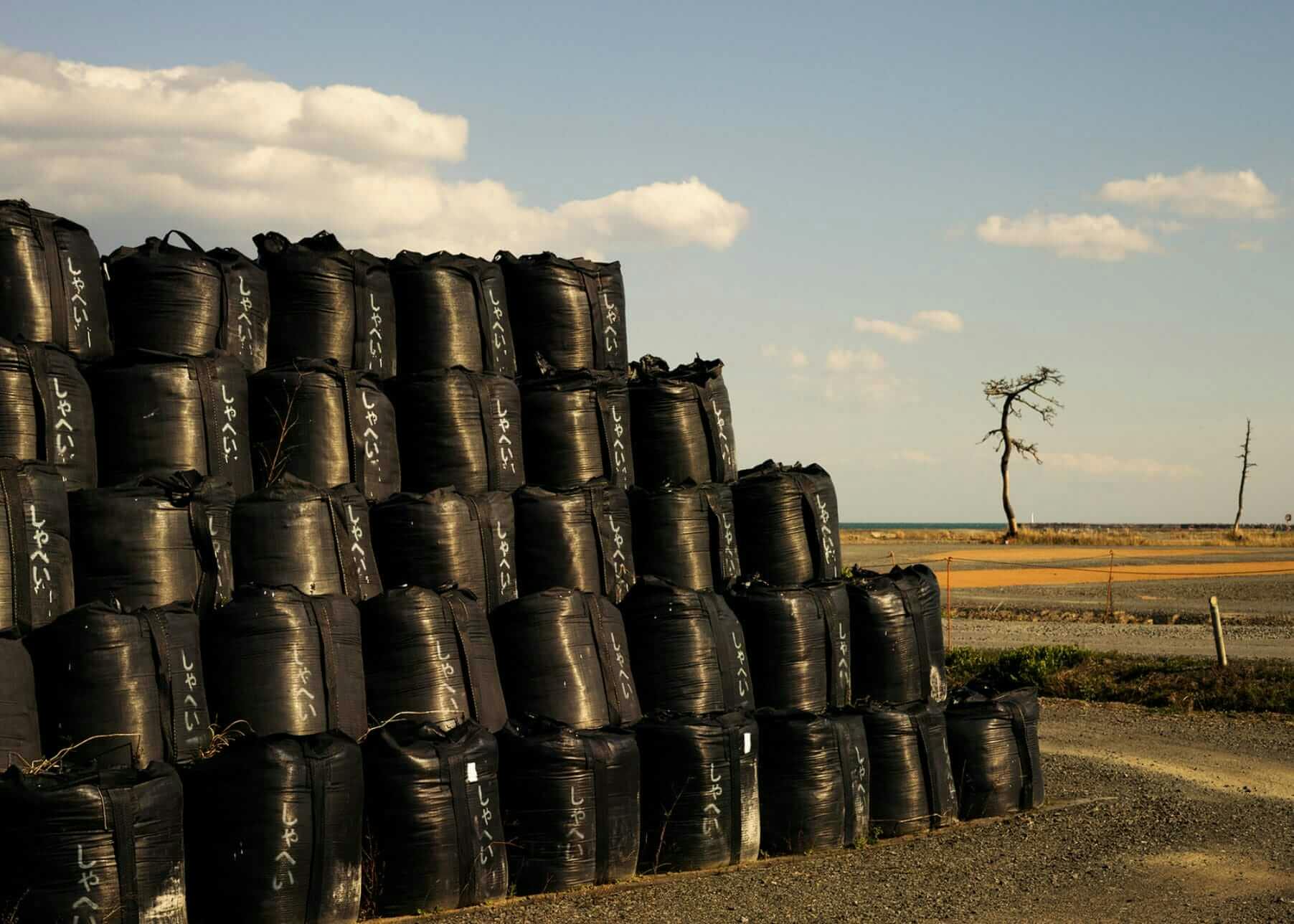Rebecca Barthory’s photo depicts a mountain of low-level contaminated debris generated from clean-up operations. It has been a government priority to reduce the background radiation levels at numerous hotspots and in evacuated zones in order to repatriate the original population. To achieve this, massive clean-up operations have been taking place since the nuclear disaster. These “flexible container” bags usually contain the removed surface layer of soil or plant debris, such as fallen leaves and twigs. Adding to the decontamination debris, any matter containing more than 8,000 Becquerel per kilogram is labelled as designated waste and is required to be deposited in a specified final-disposal site.
However, these clean-up operations started without determining where that site would be. Local opposition movements blossomed in almost every candidate area, and mountains of flexible container bags started to crop up in open spaces close to where clean-up operations had taken place. The bags here are neatly stacked, but it has been reported that these mountains collapse in typhoon events, that many bags have been lost, and that some mysteriously reappeared at an illegal dumping ground many hundreds of kilometres away.
It could be said that this picture is a reflection of the whole Japanese nuclear policy. Not only the clean-up operation, but also the whole nuclear power programme has been promoted up until now with no fixed destination for the waste generated from the activity. Highly-contaminated waste from the processing of spent nuclear fuel is temporarily stockpiled in Rokkasho, Aomori, and Tokai, Ibaragi, while relatively low-level waste from daily operations is being accumulated on-site at the nuclear power stations, fittingly dubbed “mansions without a toilet.”
While these flexible container bags of decontamination debris are gradually finding their way to a secure home, the abovementioned nuclear “mansions” are being reactivated one by one, with “toilets” still out of sight.

